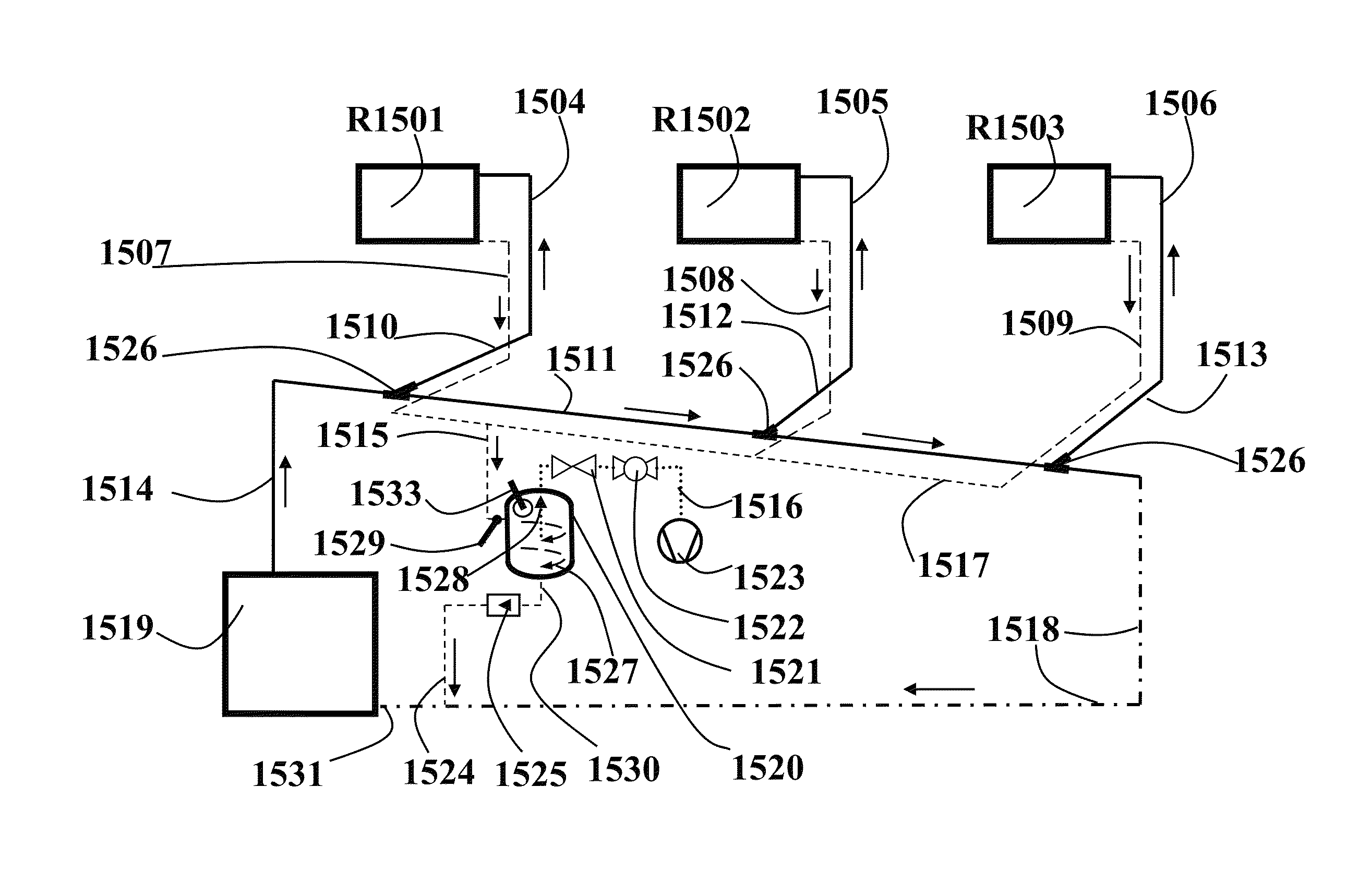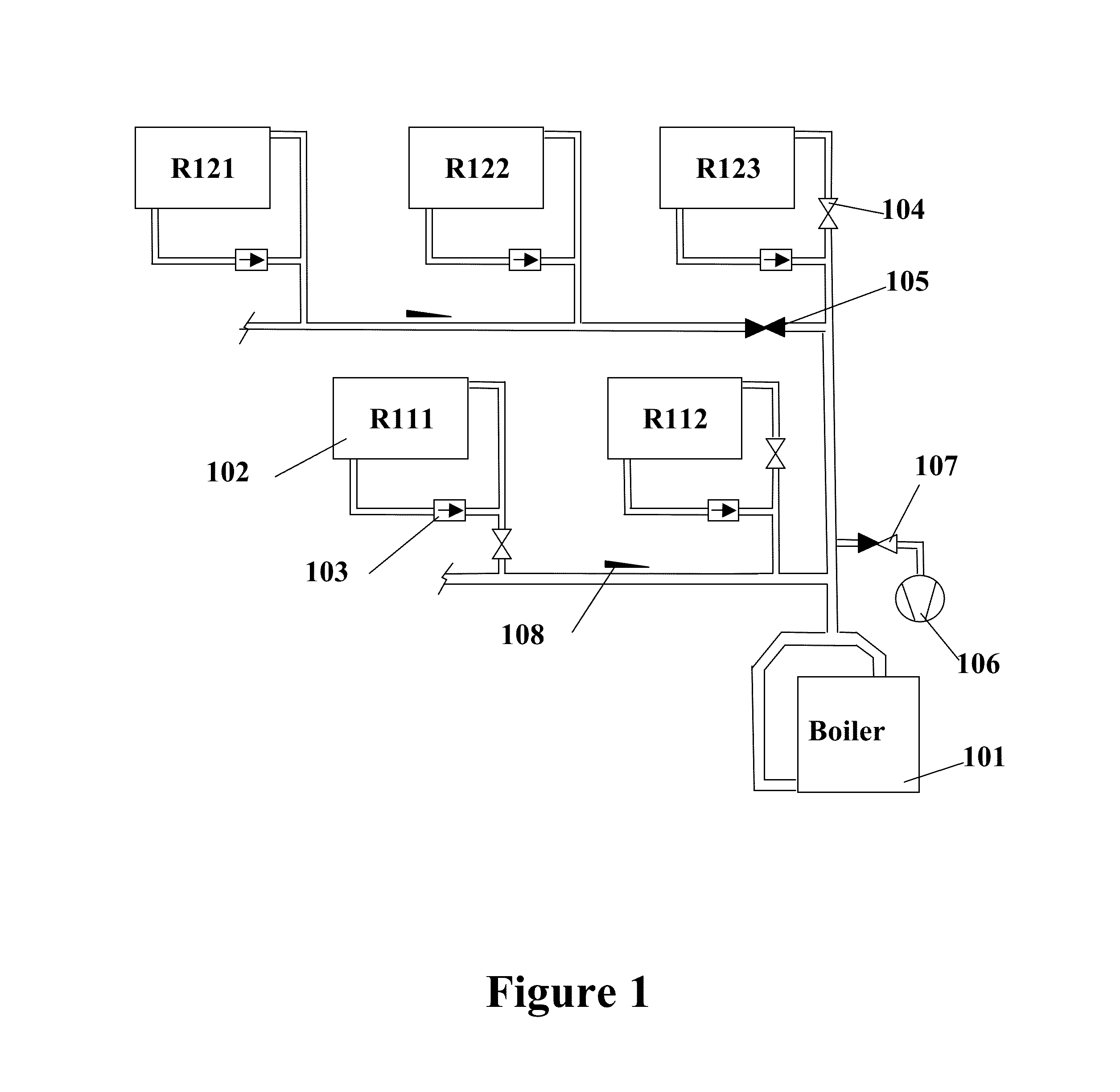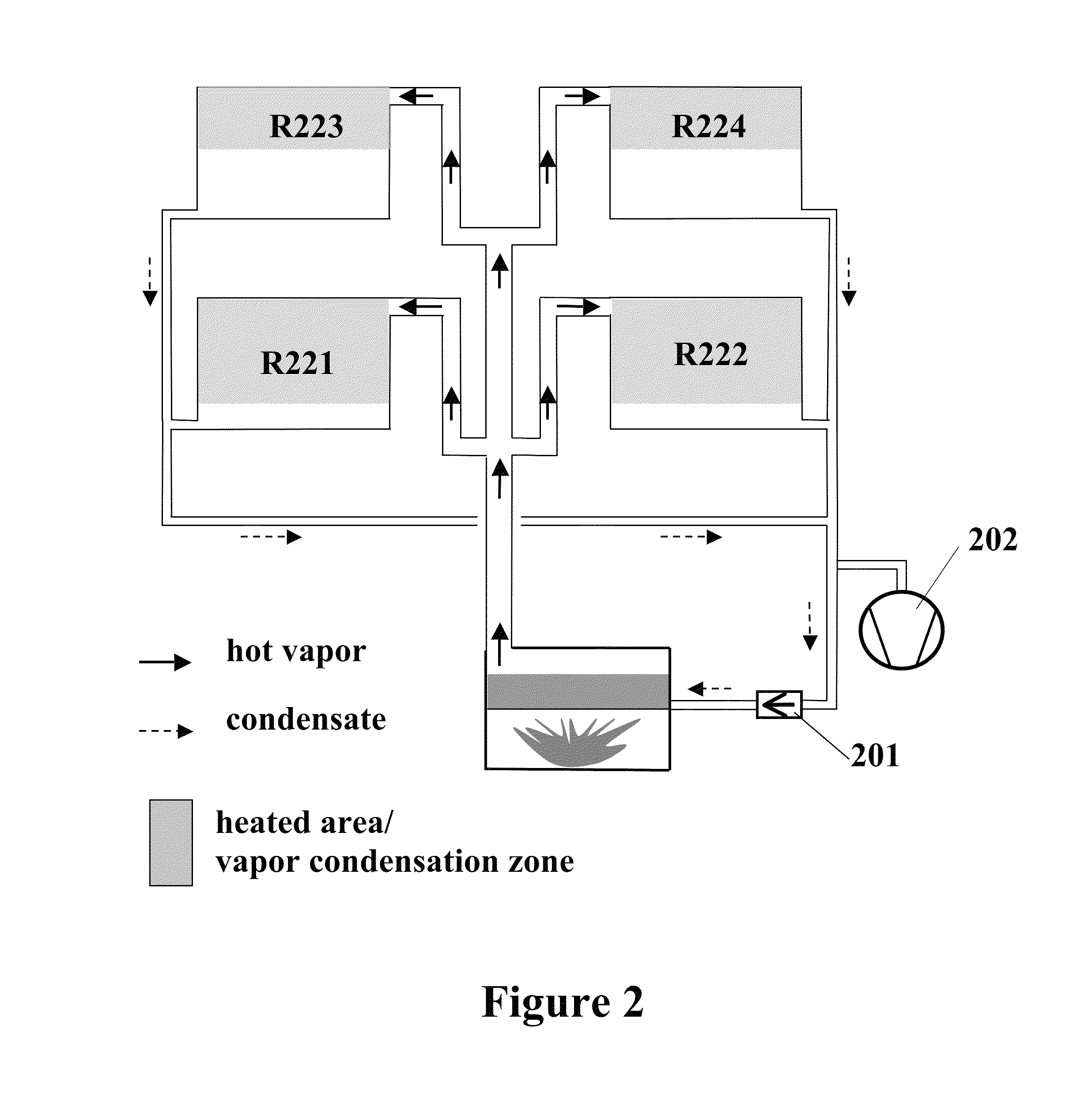Vacuum sustaining heating systems and methods
a technology of vacuum pump and vacuum pump, which is applied in the direction of heating types, lighting and heating apparatus, furnaces, etc., can solve the problems of condensate hammering, major maintenance, repair and replacement problems, and increase maintenance costs due to additional vacuum equipment, etc., to prevent condensate hammering
- Summary
- Abstract
- Description
- Claims
- Application Information
AI Technical Summary
Benefits of technology
Problems solved by technology
Method used
Image
Examples
Embodiment Construction
[0058]The following description is merely exemplary in nature and is in no way intended to limit the present disclosure, application, or uses.
[0059]In order to solve the aforementioned problems with conventional steam, vacuum, and hot water heating systems, presented herein are numerous improvements to vapor vacuum systems, including:[0060](1) First is presented single-pipe vapor vacuum systems having a low temperature periodic condensate return.[0061](2) Second is presented an embodiment of a two-pipe vapor vacuum system without steam traps.[0062](3) Third is disclosed systems and methods for integrating the two-pipe vapor vacuum system with a condensing boiler.[0063](4) Fourth is presented several systems and method of operating radiators with the vapor vacuum system to ensure low temperature condensate return.[0064](5) Fifth are presented several designs for condensing vacuum boilers that can be utilized with the low temperature vapor vacuum system.[0065](6) Sixth is presented a ...
PUM
 Login to View More
Login to View More Abstract
Description
Claims
Application Information
 Login to View More
Login to View More - R&D
- Intellectual Property
- Life Sciences
- Materials
- Tech Scout
- Unparalleled Data Quality
- Higher Quality Content
- 60% Fewer Hallucinations
Browse by: Latest US Patents, China's latest patents, Technical Efficacy Thesaurus, Application Domain, Technology Topic, Popular Technical Reports.
© 2025 PatSnap. All rights reserved.Legal|Privacy policy|Modern Slavery Act Transparency Statement|Sitemap|About US| Contact US: help@patsnap.com



